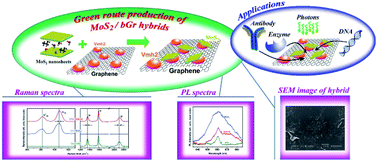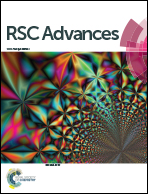Electrostatically driven scalable synthesis of MoS2–graphene hybrid films assisted by hydrophobins†
Abstract
Liquid processing of 2D crystals offers scalable strategies for the production of 2D materials. Herein, we produce the hybrids of MoS2/graphene, consisting of few-layered nanosheets of luminescent MoS2 and biofunctionalized few-layered graphene assisted by the Vmh2 hydrophobin, a self-assembling adhesive fungal protein, through a green route of production. The functionalization of the graphene flakes assisted by Vmh2 adds surface charge, which enables electrostatic interaction between MoS2 and graphene flakes, leading to the van der Waals coupling. The surface morphology of 2D material based films is analyzed through optical imaging, scanning and transmission electron microscopy. The produced dispersions of MoS2, bGr and the hybrid solutions, are investigated by electrophoretic mobility, UV-Vis, Raman and photoluminescence spectroscopy. Interestingly, the effect of van der Waals interactions between the layers of MoS2 and bGr crystals are evidenced through the significant upshift of 14 cm−1 in the G′ Raman peak of graphene and an upshift of 1.4 cm−1 of the A1g peak of MoS2. Due to the formation of heterostructures, significant quenching of the characteristic photoluminescence emitted from the monolayers of MoS2 was also observed, indicating the charge transfer process occurring between the crystal layers. This approach of scalable synthesis of 2D material based nano-bio hybrids offers economic and eco-friendly solutions to promote novel applications in biosensing and photodetection.



 Please wait while we load your content...
Please wait while we load your content...